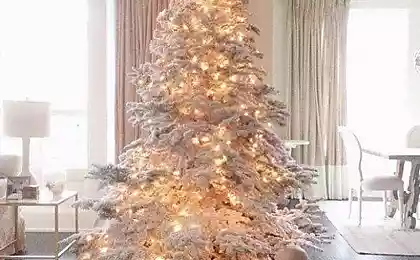542
For the first time in human history, and Yap.
The device NASA Voyager 1 goes into the unknown space beyond the solar system.
The Daily Mail writes about one of the greatest, if not the most grandiose achievements of mankind - the spacecraft Voyager 1 goes into deep space. At the moment it leaves the final frontier - border heliosphere, which is like a giant bubble surrounding the solar system, protecting from the effects of the interstellar radiation.
This is the first ever man-made object sailing further into the depths of the universe. Now he is about 18 billion kilometers from Earth - a distance of NASA's overcome in 35 years. Now its speed is 10 kilometers per second.
Using radio waves, Voyager 1 is still sending signals back to Earth - because of the huge distances they reach with a 16-hour delay. Apparently, the machine began to be exposed to high temperatures, according to an article in which the author refers to Boston magazine The Atlantics.
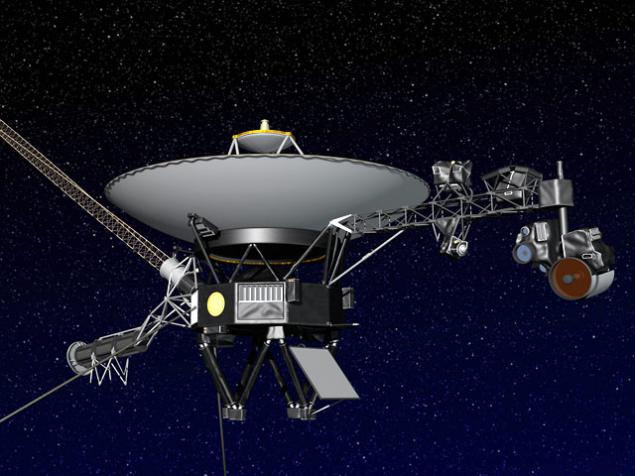
On his approach to the edge of the heliosphere is the fact that in recent months around the unit to 10% increase in the number of particles of the interstellar wind. The heliosphere, formed, roughly speaking, the flow of solar wind, not let into the cosmic rays from outside, but it is closer to the edge of the conditional number of "foreign" particles increases.
At the same time to understand exactly when Voyager 1 will go into space, it will be difficult. Scientists hope to detect some of the "telltale signs", such as, for example, a change in the magnetic field direction and the type of radiation. Interstellar wind is slower solar, it is colder and denser.
Specialist program Voager Edward Stone says that scientists daily with great interest examine the data from the device, for a few hours without a break "listen" distant machines. It is incredibly exciting from a scientific point of view - to see and hear something that has not been seen or heard before, he shares.
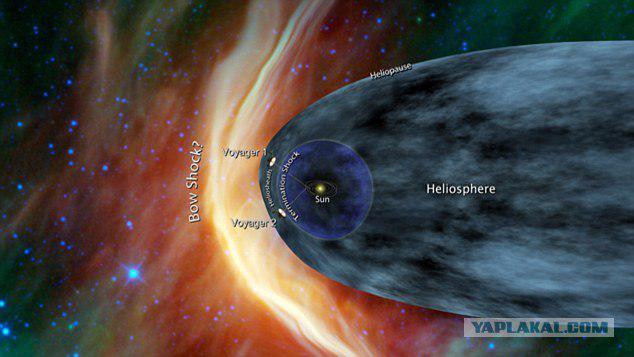
The twin probes Voyager 1 and Voyager 2 were launched by NASA in 1977. The original purpose of the launch was to study Jupiter and Saturn, and they are really high-quality images for the first time passed these giant planets. It was assumed that the probes will cease to exist in 1981. But after performing the tasks they were sent to different parts of the heliosphere to explore the farthest reaches of the solar system.
In fact, cell phones were sent to search for extraterrestrial intelligence. They contain messages of extraterrestrial civilizations, namely, gold wheels with basic information about our planet, presented in sound and image.
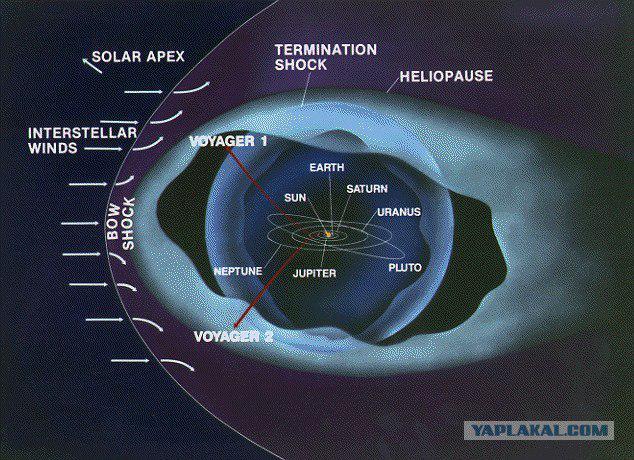
Human speech is a brief greetings in 55 languages, the mother whispered, crying baby; nature - the voices of birds and animals, the sound of surf, wind and rain, thunder, rumbling volcanoes. Also on the disc is recorded fragments of works by Bach, Mozart, Beethoven, jazz, Louis Armstrong, Chuck Berry and the folk music of many countries.
Voyager 1 is the first time in the history of space flight has reached the external borders of the solar system and is now the most distant from Earth and the most fast-moving objects created by man. Voyager 2 became the first and only unit, reached Uranus and Neptune.
The probes are fitted with three nuclear generators, designed for trouble-free operation until 2020. All ...
Picchu given as illustrations to the event with 2 sites listed in segodnyaschney news ...
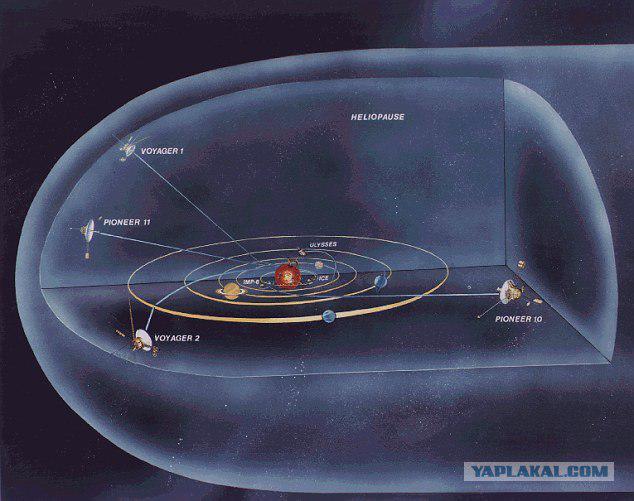
Source:
The Daily Mail writes about one of the greatest, if not the most grandiose achievements of mankind - the spacecraft Voyager 1 goes into deep space. At the moment it leaves the final frontier - border heliosphere, which is like a giant bubble surrounding the solar system, protecting from the effects of the interstellar radiation.
This is the first ever man-made object sailing further into the depths of the universe. Now he is about 18 billion kilometers from Earth - a distance of NASA's overcome in 35 years. Now its speed is 10 kilometers per second.
Using radio waves, Voyager 1 is still sending signals back to Earth - because of the huge distances they reach with a 16-hour delay. Apparently, the machine began to be exposed to high temperatures, according to an article in which the author refers to Boston magazine The Atlantics.

On his approach to the edge of the heliosphere is the fact that in recent months around the unit to 10% increase in the number of particles of the interstellar wind. The heliosphere, formed, roughly speaking, the flow of solar wind, not let into the cosmic rays from outside, but it is closer to the edge of the conditional number of "foreign" particles increases.
At the same time to understand exactly when Voyager 1 will go into space, it will be difficult. Scientists hope to detect some of the "telltale signs", such as, for example, a change in the magnetic field direction and the type of radiation. Interstellar wind is slower solar, it is colder and denser.
Specialist program Voager Edward Stone says that scientists daily with great interest examine the data from the device, for a few hours without a break "listen" distant machines. It is incredibly exciting from a scientific point of view - to see and hear something that has not been seen or heard before, he shares.

The twin probes Voyager 1 and Voyager 2 were launched by NASA in 1977. The original purpose of the launch was to study Jupiter and Saturn, and they are really high-quality images for the first time passed these giant planets. It was assumed that the probes will cease to exist in 1981. But after performing the tasks they were sent to different parts of the heliosphere to explore the farthest reaches of the solar system.
In fact, cell phones were sent to search for extraterrestrial intelligence. They contain messages of extraterrestrial civilizations, namely, gold wheels with basic information about our planet, presented in sound and image.

Human speech is a brief greetings in 55 languages, the mother whispered, crying baby; nature - the voices of birds and animals, the sound of surf, wind and rain, thunder, rumbling volcanoes. Also on the disc is recorded fragments of works by Bach, Mozart, Beethoven, jazz, Louis Armstrong, Chuck Berry and the folk music of many countries.
Voyager 1 is the first time in the history of space flight has reached the external borders of the solar system and is now the most distant from Earth and the most fast-moving objects created by man. Voyager 2 became the first and only unit, reached Uranus and Neptune.
The probes are fitted with three nuclear generators, designed for trouble-free operation until 2020. All ...
Picchu given as illustrations to the event with 2 sites listed in segodnyaschney news ...

Source:



